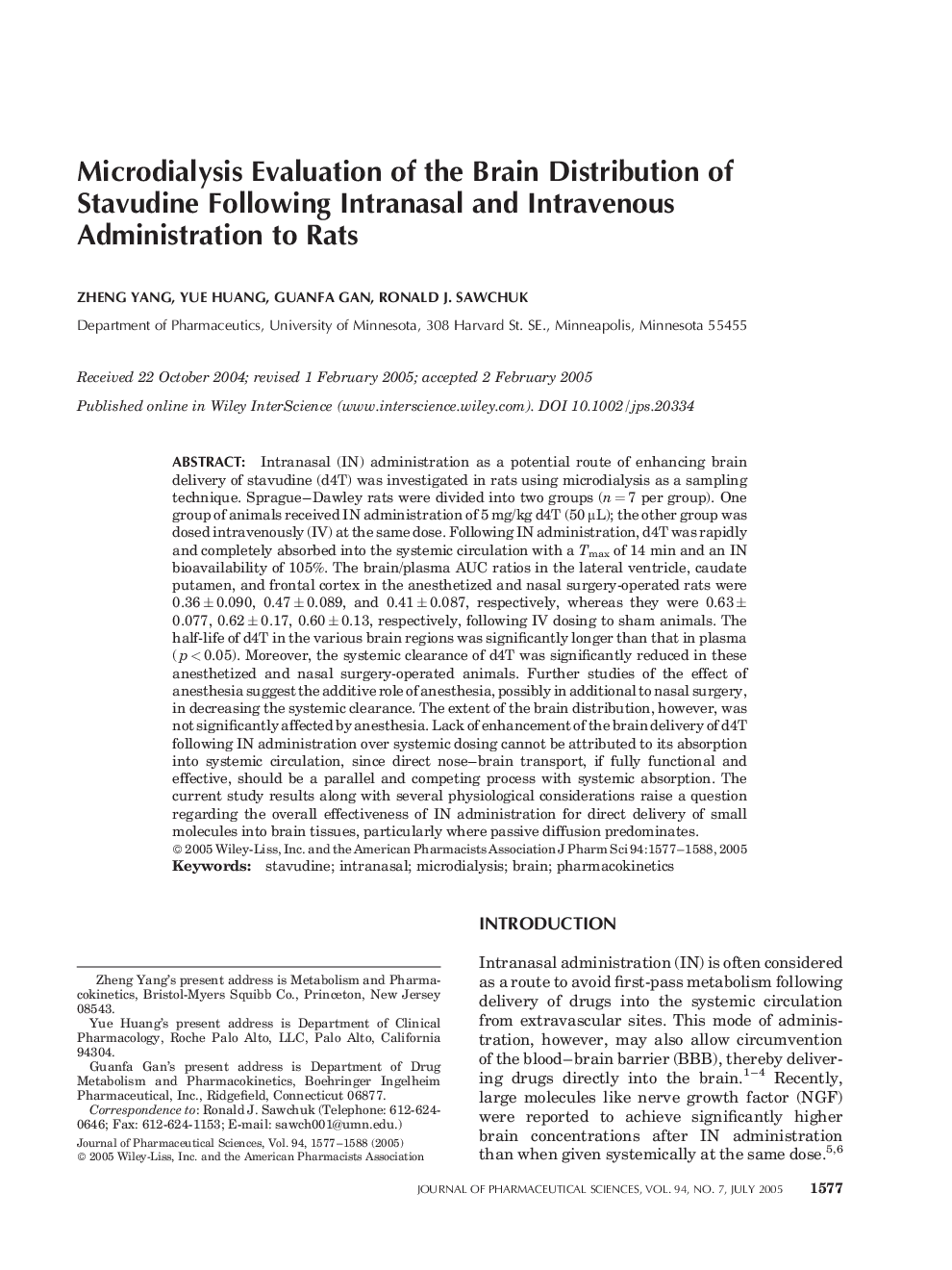| کد مقاله | کد نشریه | سال انتشار | مقاله انگلیسی | نسخه تمام متن |
|---|---|---|---|---|
| 8994846 | 1114466 | 2005 | 12 صفحه PDF | دانلود رایگان |
عنوان انگلیسی مقاله ISI
Microdialysis evaluation of the brain distribution of stavudine following intranasal and intravenous administration to rats
دانلود مقاله + سفارش ترجمه
دانلود مقاله ISI انگلیسی
رایگان برای ایرانیان
کلمات کلیدی
موضوعات مرتبط
علوم پزشکی و سلامت
داروسازی، سم شناسی و علوم دارویی
اکتشاف دارویی
پیش نمایش صفحه اول مقاله

چکیده انگلیسی
Intranasal (IN) administration as a potential route of enhancing brain delivery of stavudine (d4T) was investigated in rats using microdialysis as a sampling technique. Sprague-Dawley rats were divided into two groups (n = 7 per group). One group of animals received IN administration of 5 mg/kg d4T (50 μL); the other group was dosed intravenously (IV) at the same dose. Following IN administration, d4T was rapidly and completely absorbed into the systemic circulation with a Tmax of 14 min and an IN bioavailability of 105%. The brain/plasma AUC ratios in the lateral ventricle, caudate putamen, and frontal cortex in the anesthetized and nasal surgery-operated rats were 0.36 ± 0.090, 0.47 ± 0.089, and 0.41 ± 0.087, respectively, whereas they were 0.63 ± 0.077, 0.62 ± 0.17, 0.60 ± 0.13, respectively, following IV dosing to sham animals. The half-life of d4T in the various brain regions was significantly longer than that in plasma (p < 0.05). Moreover, the systemic clearance of d4T was significantly reduced in these anesthetized and nasal surgery-operated animals. Further studies of the effect of anesthesia suggest the additive role of anesthesia, possibly in additional to nasal surgery, in decreasing the systemic clearance. The extent of the brain distribution, however, was not significantly affected by anesthesia. Lack of enhancement of the brain delivery of d4T following IN administration over systemic dosing cannot be attributed to its absorption into systemic circulation, since direct nose-brain transport, if fully functional and effective, should be a parallel and competing process with systemic absorption. The current study results along with several physiological considerations raise a question regarding the overall effectiveness of IN administration for direct delivery of small molecules into brain tissues, particularly where passive diffusion predominates. © 2005 Wiley-Liss, Inc. and the American Pharmacists Association.
ناشر
Database: Elsevier - ScienceDirect (ساینس دایرکت)
Journal: Journal of Pharmaceutical Sciences - Volume 94, Issue 7, July 2005, Pages 1577-1588
Journal: Journal of Pharmaceutical Sciences - Volume 94, Issue 7, July 2005, Pages 1577-1588
نویسندگان
Zheng Yang, Yue Huang, Guanfa Gan, Ronald J. Sawchuk,